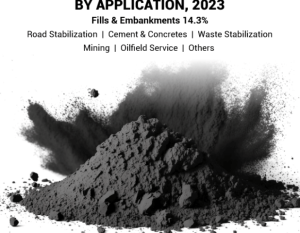
According to Forrtune Business Insights, The global fly ash market was valued at USD 13.51 billion in 2023 and is forecast to grow from USD 14.31 billion in 2024 to USD 23.85 billion by 2032, representing a compound annual growth rate (CAGR) of 6.6% over the forecast period. The Asia–Pacific region led the market in 2023, holding a 74.69% share. In the United States, the fly ash market is also expected to expand, reaching an estimated USD 1.07 billion by 2032, driven largely by demand from cement, concrete and road-construction applications.
Fly ash, also known as flue ash, is a fine particulate byproduct released during coal combustion and collected using emission control systems such as scrubbers, electrostatic precipitators, or fabric filters. Thermal power plants generate vast quantities of this ash, and its disposal has long posed significant environmental challenges. Historically, fly ash was regarded as a low-value material, primarily used for landfilling. However, in recent years, its application in cement manufacturing has emerged as a key advancement, as fly ash serves as a pozzolanic additive that enhances the performance of cement.

By type, the market is bifurcated into Class F and Class C. Class F ash is created from bituminous and anthracite coals. This class consists of silica and alumina and lower calcium content. The Class F segment is expected to lead the market due to its advantages such as increased compressive strength and less heat generation.
Based on application, the market is categorized into cement & concretes, fills & embankments, waste stabilization, mining, oil field service, road stabilization, and others. The cement & concrete segment is anticipated to dominate the global market share due to rising product demand in the construction industry.